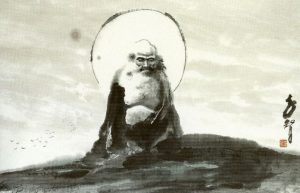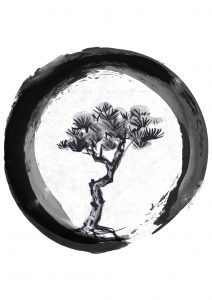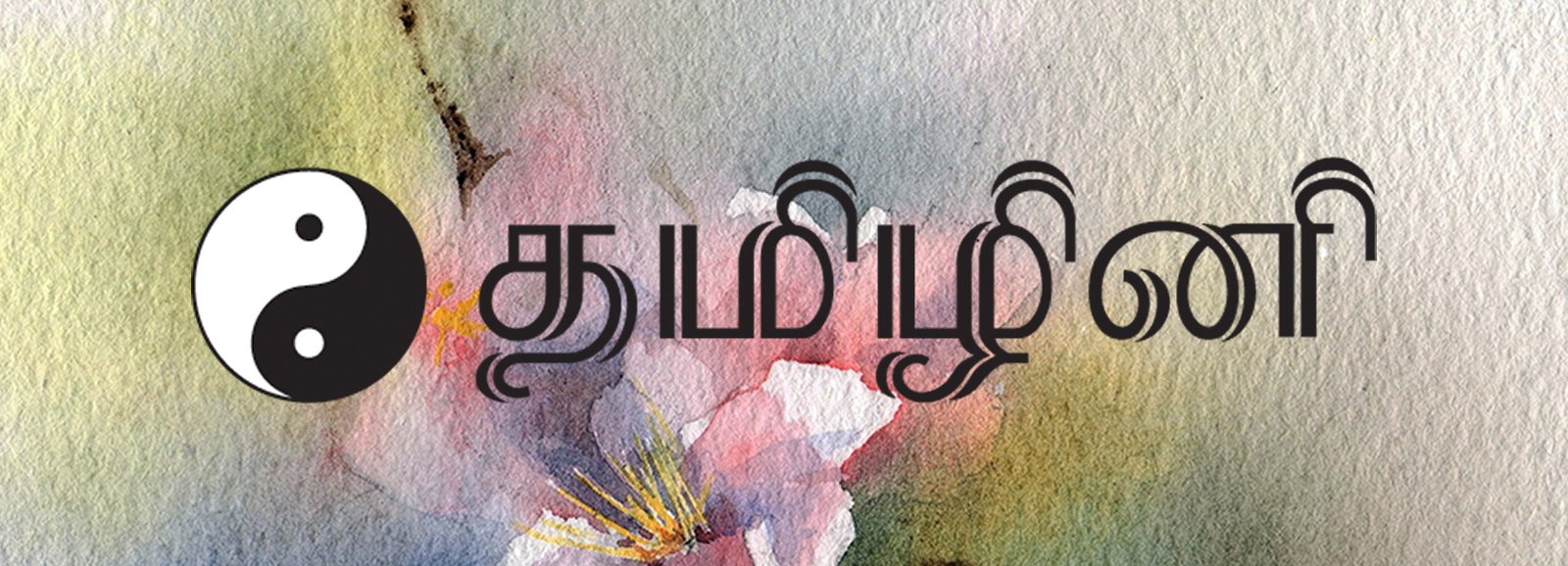Unlike the physique our mind is intangible. But what we are is what our mind basically is. That’s what psychologists say about the mind and there is a school of thought that believes in ‘mind only’ (Chitta or mana maatra). At the molecular level, what we are is based on what our DNA is. DNA is a fundamental molecular structure in the nuclei of cells and it is its content that is transferred from one generation to the next through the reproductive processes. The unique characteristics of a generation are phenotypically and genotypically expressed through the contents of one’s DNA.
But recent research reveal that it is not only the DNA but the epigenetic influences on a cell that also contributes to the uniqueness of a particular cell or a collection of cells called an organism or a human being. The epigenetic attributes could also be, in turn, managed by the extent of one’s mind, the way it is constructed over the course of one’s lifetime. The process known as ‘Industrial Melanism’ is an apt example. Industrial air pollution that covered an entire canopy of a forest in dark soot, left the resident moths that were light gray in color exposed to the attack of predatory birds. The moths saved themselves by morphing their coat color to a darker shade of grey and stayed camouflaged. This is the wonder about our mind and it would not be an exaggeration to call it a miracle. Let us look at some of the unique characteristics of our mind that are always intriguing.
Only one thought at a time
The mind is capable of creating marvelous things in the world, ranging from a simple dream we experience in our sleep to inventing a new product, or simply responding spontaneously to a question during an interview. In spite of its amazing capabilities, do you know that it can think only one thought at a time? It cannot handle more than one thought process at a given moment, but can only switch to and fro between two or more thought processes. It is basically a medium where several thoughts can float about, like a stream on which many boats move around. It is only our conscious attention and deliberate awareness that can pick up one particular thought at a time to process and to follow up.
Is good and bad different or the same?
It is a common belief that there is more than one aspect to the mind – that there is a good and a bad attribute in the mind and that one becomes whichever aspect one nurtures. During meditation practice you are asked to look into your own mind, as if there were two within you, one watching over the other. In reality it’s all one and it depends solely on the conscious awareness of a person to look into himself/herself. There is nothing other than the ‘one’. It could even be said that there is not even ‘one’ and only there ‘is’. If that is the case, how is it possible to discriminate one from the other, i.e., earth and universe, good and evil, or I from the other that is ‘you’? Or, the ‘I’, which is nothing but ‘you’.
One does not know what one utters at the immediate moment
During a casual conversation with your friends it is impossible for you to know beforehand which particular word you are going to utter at the immediate moment just before actually uttering it. The mind frames the sentences and makes its own syntaxes at the very moment of delivery which you cannot decipher before it is uttered. Even when one prepares for a lecture, at the moment of its delivery, one will not be able to know what word or a statement the mind would make till the very moment of its delivery. However, a deliberately memorized content is an automatic process that is programmed for future delivery, which is different from one’s original mind. Even then it can only be premeditated but not prefixed till the moment of its actual utterance.

Life from life, not from nothing
Our thoughts are fixed in such a way that there are so many presumptions we carry which influence our day to day interactions and decisions. Presumptions are part of our belief systems ingrained through our conscious and unconscious makings. One of the presumptions is that we are created from nothing. Nothing can be created from nothing. There should always be something, a precondition, for something to emerge. Take for example the life originating from a womb. It is convergence of two living cells from each parent in a reproductive process that yields a new progeny as an offspring; matter emerges from matter. Similarly, the parent cell never dies but continues to live in the body of its progeny and therefore life is only a continuum. Life begets life.
Searching for the ‘Jewel’ in the neck
One of the most quoted instances, particularly during scriptural discourses, is that of the mind searching for the ‘jewel’ that lies within one’s own neck. This imagery is used to explain one’s ignorance in which one searches for truth everywhere else except within oneself, while truth always resides within one’s own nature. The jewel is never lost but the owner in his ignorance thinks it is lost and then found. Truly, is neither lost nor found but remains luminous all the time, like the ultimate truth about who one actually is. Therefore, the mind is known to create what is not true and lead one to believe that it is true. Hence, it is wise not to trust one’s own mind and scripturally too it is a recommended age old practice to seek beyond one’s own mind, which has the original taste of infinity.
What springs from memory, what is forgotten?
It is interesting to note that the same mind that forgets a particular fact and loses it in the archives of its memory suddenly brings it forth to apparent awareness. You may meet a school mate from thirty years ago, and only vaguely recognize his or her face. You doubtfully approach the person, smile, shake hands and begin to talk, all the while desperately trying to remember the person’s name. Your memory fails and you ignore it, forgetting it while you continue to converse, and then during the course of your conversation the name surfaces from your memory. You have not taken any effort, but it just happened. No one is sure how it happened. That’s the magic of our mind.
Where the mind is?
We cannot point out to the mind or where it exactly is. Some will point to the left of one’s chest and others will point to the head. So where is it physically found in the body? Or can one surely say it is within the body? Say for example, you hear a bird sing in the early morning. You enjoy it and it makes your morning perfect. There is a feeling of well-being at that moment. Do you think you enjoy the sound of the song from within? The bird is somewhere away, at the top of a tree and you cannot even locate it, except for its song. You hear it from a distance and it goes into your mind and you are able to enjoy it. The conditions for this enjoyment are many, the bird should be able to sing, you should be able to hear it clearly, and there is the medium of air through which the sound waves get transmitted and so on. So where is the mind, is it external or internal or both? If it is both then, is it individual or collective?
Is silence, within or without?
You are alone in your reading room. It is midnight. There is utter silence prevailing in the vicinity. Everything is silent. But your mind is wandering here and there, going to the past, thinking about the future, again coming back to the present and you hate the silence in the room, where you are sitting alone. Is the silence you perceive in your mind really silent? As your mind is noisy at the same time, it cannot be said that it is silent. Alternatively, say you are alone, enjoying the personal time with you and decide to go to the mall alone. The mall is utterly noisy, songs, games, children squealing and screaming in mirth, adults shouting out to the children, and so on. But you are anchored within yourself. It’s noisy everywhere but you are soaked within you. Do you think it is noisy?

Who actually makes you feel the melody, the musician or the instrument?
You listen to a live concert of your favorite flutist or a pianist. The rendering of the artist in the live concert is divine. You are there now, enjoying every bit of it, amidst the packed crowd in the auditorium. The sound system is so advanced that every nuance the artist tries out is crystal clear to your ears. You are on cloud nine. The artist plays your favorite raga / number and at its crescendo you are in tears of joy and exhilaration. Can you say what moved you to tears? Was it the raga or the number, was it the instrument that the artist played it with, or was it the skillfulness and expertise of the artist’s rendering? Does the melody flow through the fingers of the artist or the holes in the flute or the keys of the piano or is it purely your attachment to the artist? If it is your deep connection with the artist, then what role does the instrument and raga have in making you feel for the melodious rendition of the artist?
Now here is a puzzle for you to figure out. A cut root of sugarcane is planted in the soil. It grows up absorbing nutrients and water from the soil, energy from the sunlight, photosynthesizes and is harvested. It tastes very sweet. But the sweetness is neither found in the soil, nor from the sunlight; even its own green sheaths at its head do not taste sweet. The farmer did not add sugar to the plant, but only fertilizers and pesticides. Similarly, with the flowers that are alluringly fragrant. Where does the fragrance come from? Is it in the seed? But the seed does not emit any fragrance. It is simply implanted in the soil. Is it the conglomeration of multiple factors that contribute to the fragrance or the sweetness of these plants? If the sweetness or the fragrance is a combination of multiple factors, then how can the features be attributed only to a particular plant? And is it not one in every other?
Were you born on your birthday or at conception?
We celebrate our birthdays every year. We gather with family and friends, enjoy the gathering, serve delicacies and share our love with our close ones. But what are we celebrating? Is the birthday the day of our true birth on earth? Coming out of the cozy womb, literally heading out into the earth, could that be our real birth? Then what about the time of conception? Isn’t it the moment that the two parent cells joined together to make a unique cell with mixed features of the two parents and that of each parent’s ancestors? Isn’t it the moment that you, the unique cell, were truly created? Then the unique pluripotent cell multiplies becoming a multi-cellular organism with organs and functions. The day it is delivered from the womb it is already fully grown, becomes independent, except to feed and be reared for a specific duration. When we celebrate the birth of a new baby we are in fact ten months late, as it was conceived in the womb ten months ago and has grown physically in the womb. If we are not celebrating the baby’s physical growth but its psychological growth, then this might never happen in its true sense!
Above all, a new born baby is not new as it is already been partly with its father and mother, who are in turn, partly with their respective father and mother. In that case in retrospect it is infinite! If that is the case, then contemplate about the reality of birth and death, are they real or just a thought as each one already continues to live in its progeny or on earth at the molecular and elemental level. One of the famous Zen koans asks, “What was your face when your mother was in your grandmother’s womb?’’
